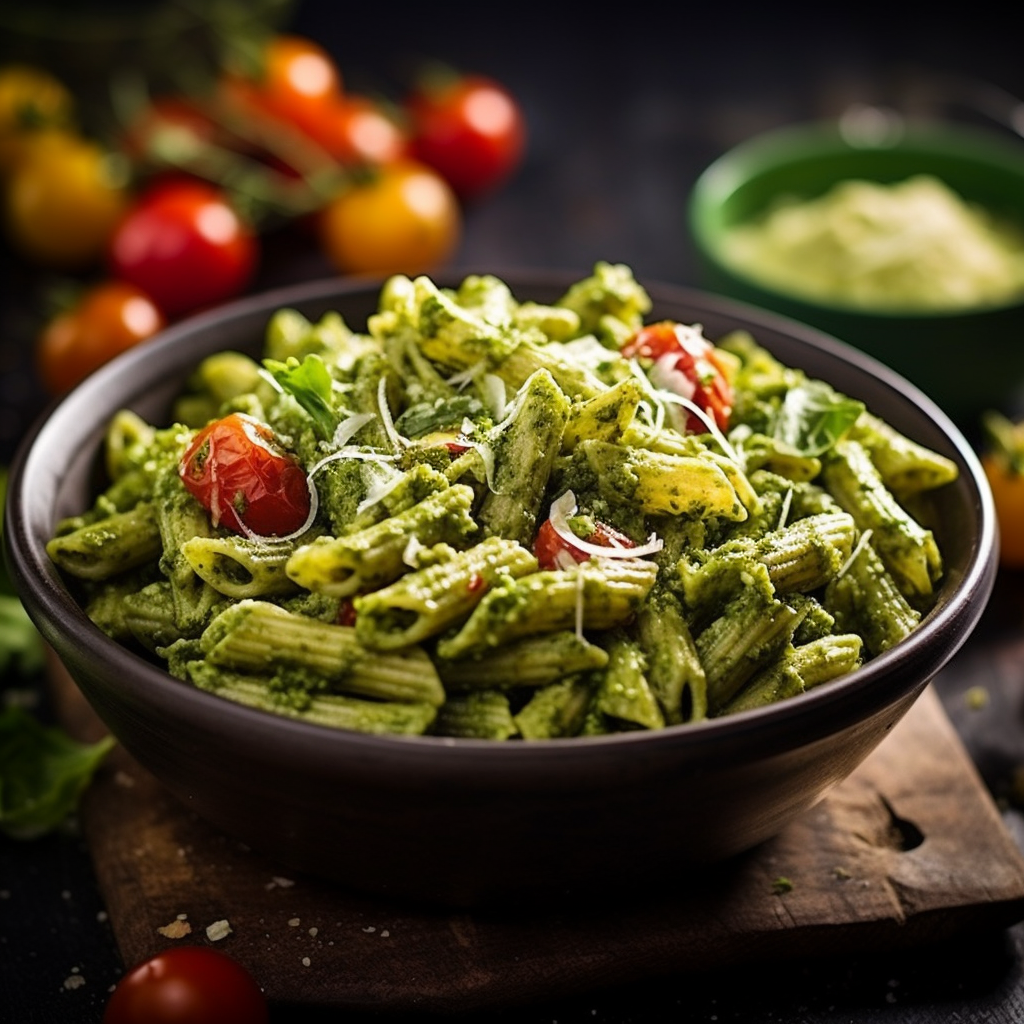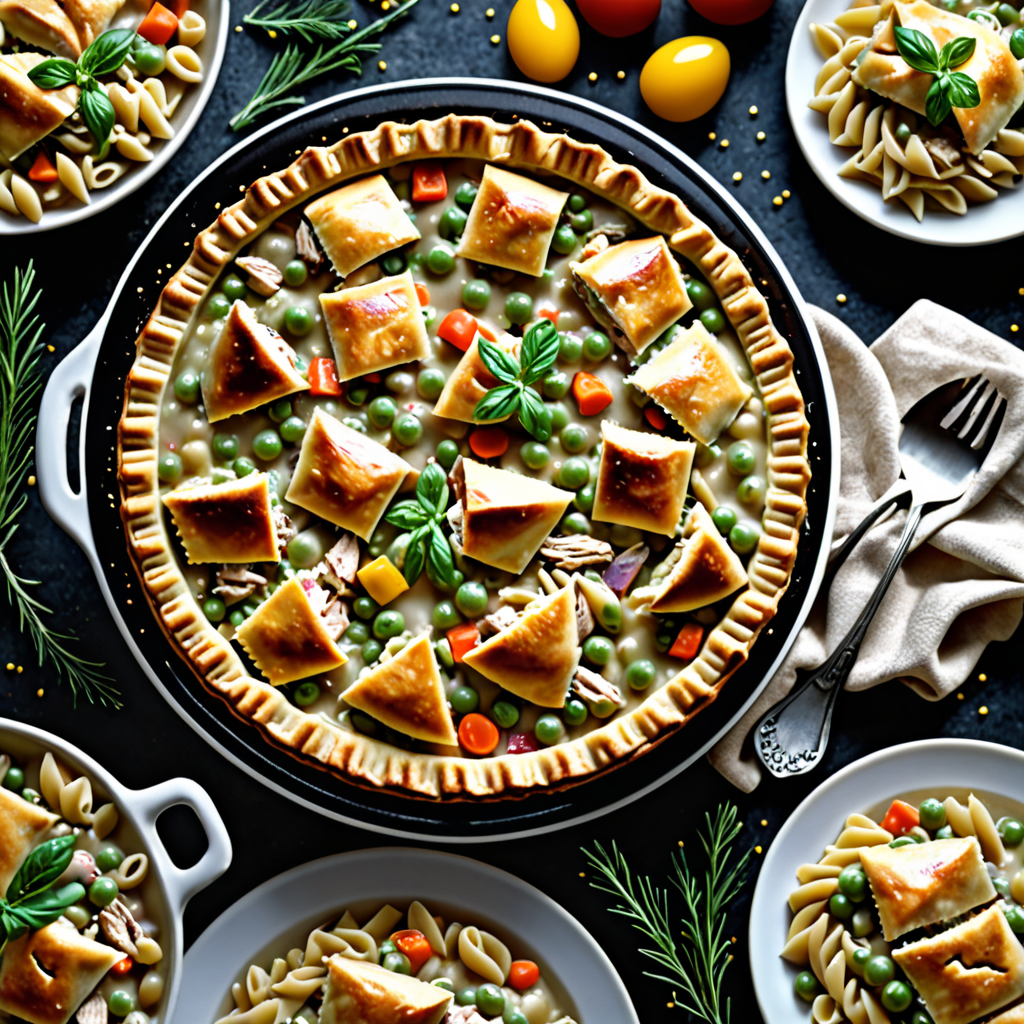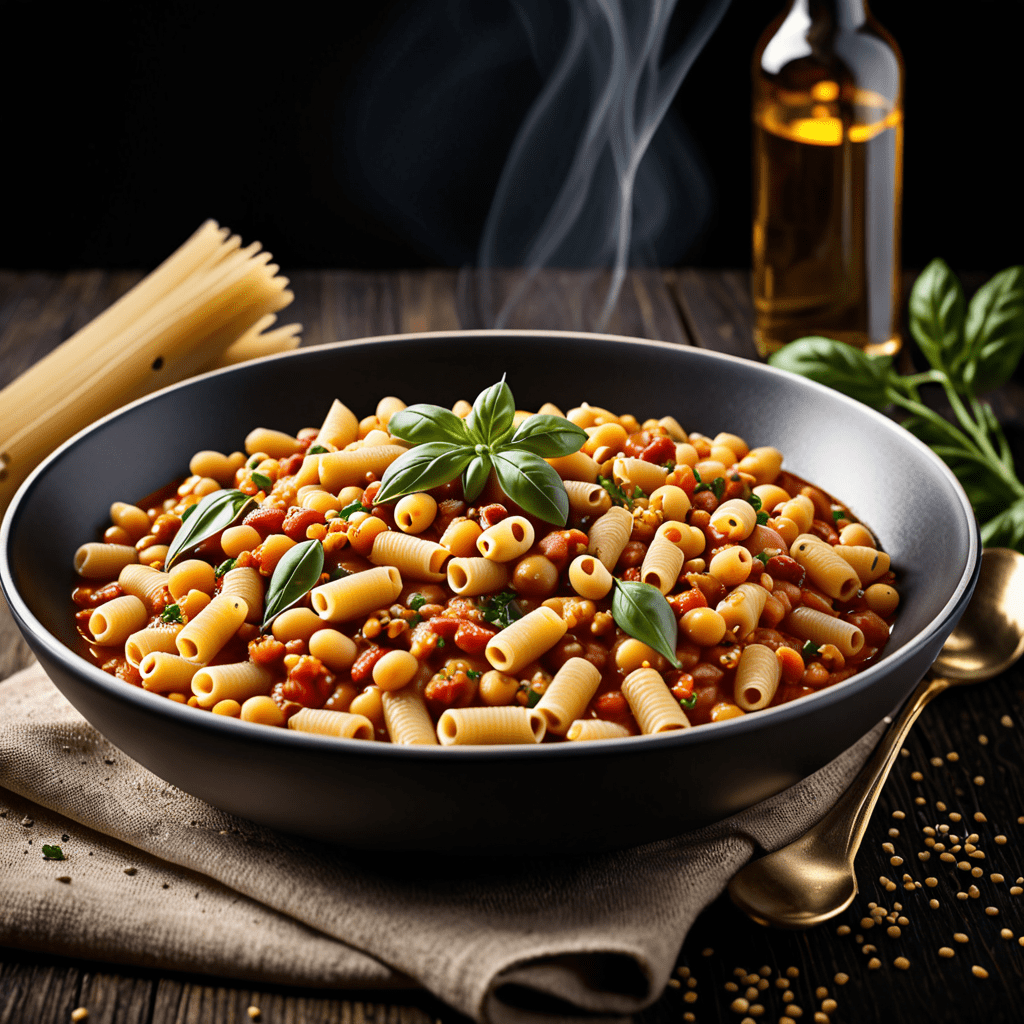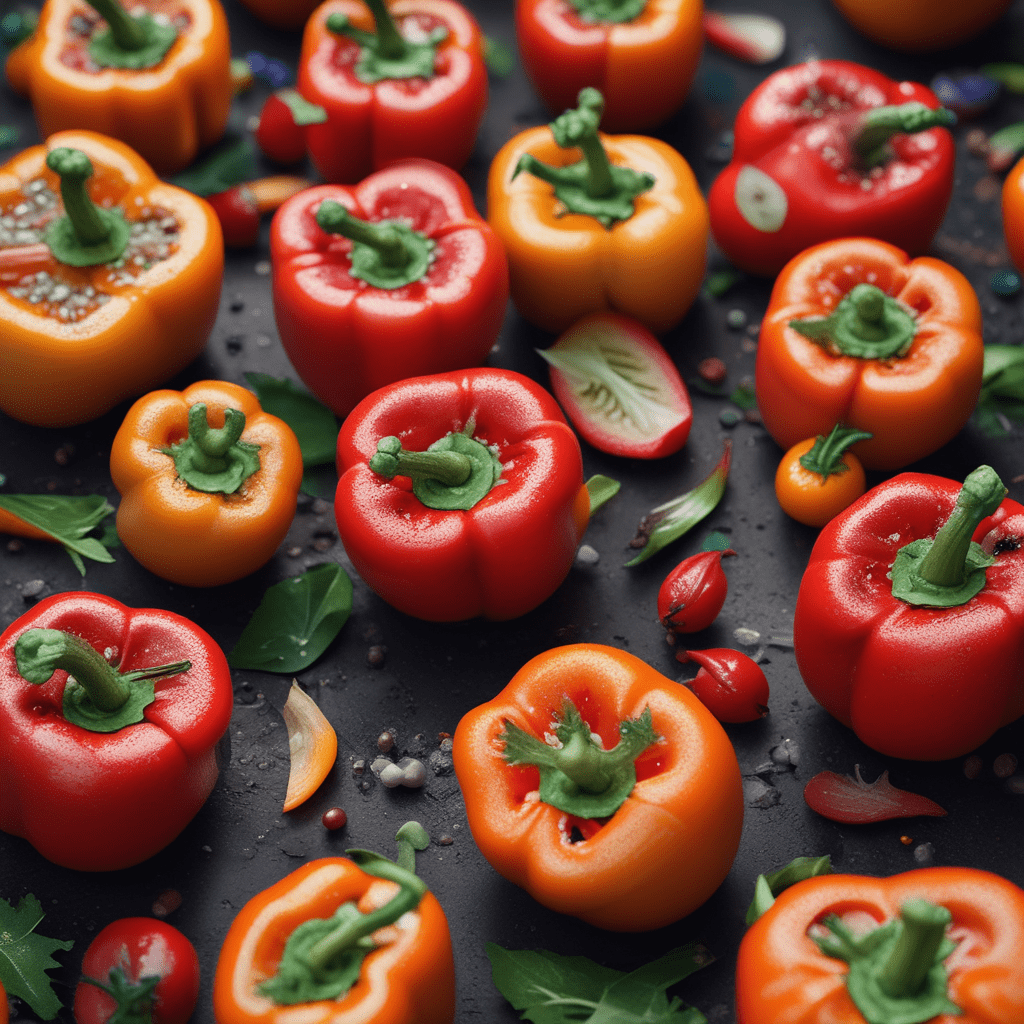Vegetarian Pesto Pasta Recipe

Introduction
Pesto pasta is a classic Italian dish that is loved by many for its vibrant flavors and simplicity. Traditionally, pesto sauce is made with fresh basil, garlic, pine nuts, Parmesan cheese, and olive oil. However, for those following a vegetarian diet or simply looking for a meat-free option, we have a delicious vegetarian pesto pasta recipe that will satisfy your cravings. This recipe replaces the Parmesan cheese with nutritional yeast, making it completely plant-based and full of savory goodness. Let’s dive into the ingredients and directions to create this mouthwatering dish!
Ingredients
To make vegetarian pesto pasta, you will need the following ingredients:
- 2 cups fresh basil leaves
- 3 cloves garlic
- ½ cup pine nuts
- ¼ cup nutritional yeast
- ½ cup extra virgin olive oil
- Salt and pepper to taste
- 12 oz (340g) pasta of your choice (such as spaghetti or penne)
- Optional toppings: cherry tomatoes, sliced avocado, or chopped fresh basil
Directions
Follow these simple steps to prepare the vegetarian pesto pasta:
- In a food processor or blender, add the fresh basil leaves, garlic cloves, pine nuts, and nutritional yeast. Pulse until the ingredients are well combined.
- With the motor running, slowly drizzle in the extra virgin olive oil until a smooth and creamy consistency is achieved. You may need to scrape down the sides of the processor or blender occasionally.
- Season the pesto sauce with salt and pepper to taste. Adjust the seasonings according to your preference.
- Cook the pasta according to the package instructions until it is al dente. Before draining, reserve 1/4 cup of the pasta cooking water.
- In a large mixing bowl, combine the cooked pasta, pesto sauce, and reserved pasta cooking water. Toss until the pasta is evenly coated with the sauce.
- Serve the vegetarian pesto pasta warm and garnish with optional toppings such as cherry tomatoes, sliced avocado, or chopped fresh basil. Enjoy!
FAQ
Q: Can I use a different type of nut instead of pine nuts?
A: Absolutely! While pine nuts are traditionally used in pesto, you can substitute them with walnuts, almonds, or even cashews for a slightly different flavor. Feel free to experiment and find your favorite combination.
Q: What can I use instead of nutritional yeast?
A: Nutritional yeast adds a cheesy and nutty flavor to the pesto sauce. If you don’t have nutritional yeast on hand, you can use grated Parmesan cheese if you’re not strictly following a vegan diet. Alternatively, you can omit it altogether and still enjoy a delicious basil-garlic pesto.
Q: Can I store leftover pesto pasta?
A: Yes, you can store leftover pesto pasta in an airtight container in the refrigerator for up to three days. However, the color of the pesto may darken due to oxidation. To prevent this, you can drizzle a thin layer of olive oil on top before storing.
Q: Can I freeze the pesto sauce?
A: Absolutely! Pesto sauce freezes beautifully. You can transfer the pesto to ice cube trays and freeze them. Once frozen, transfer the pesto cubes to a resealable plastic bag and store in the freezer for up to three months. This way, you can enjoy homemade pesto anytime simply by thawing a few cubes.
Q: Can I use store-bought pesto sauce instead?
A: If you’re short on time or don’t have access to fresh basil, you can certainly use store-bought pesto sauce. Just make sure to check the ingredients to ensure it is vegetarian. However, making your own pesto from scratch gives you the opportunity to adjust the flavors to your liking and guarantee a fresh and vibrant sauce.
Now that you have this delicious vegetarian pesto pasta recipe in your repertoire, you can whip up a satisfying meal in no time. Enjoy the flavors of Italy with this plant-based twist on a classic dish. Buon appetito!





